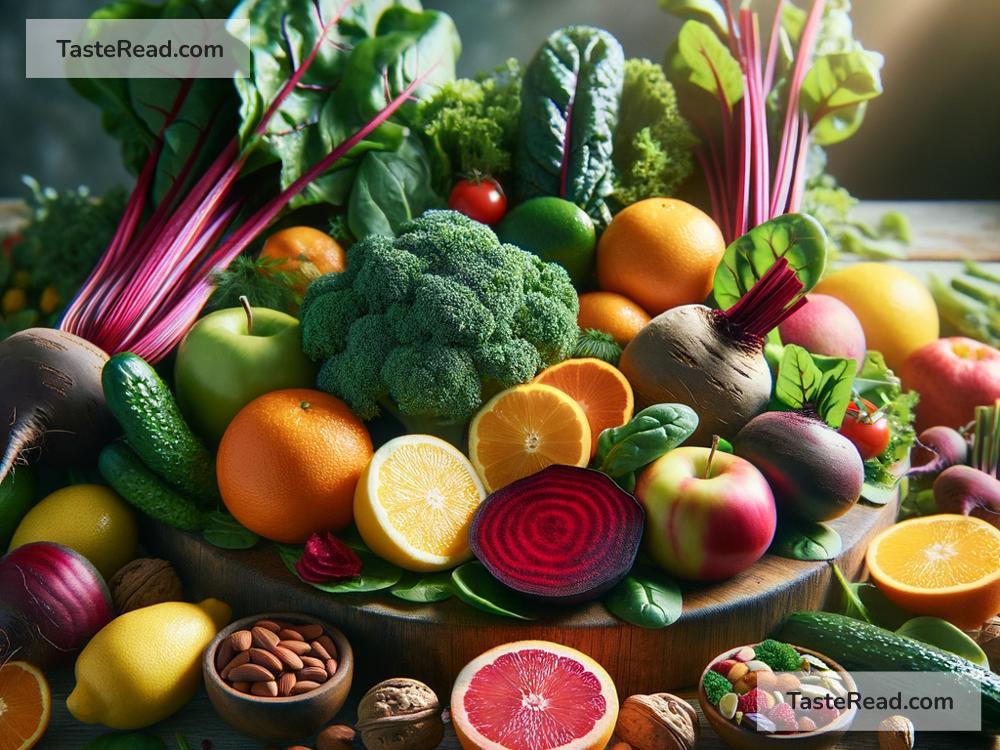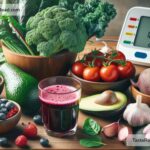Foods for Fighting Hypoxia: Boost Your Oxygen Levels Naturally
Hypoxia is a condition where your body’s tissues don’t get enough oxygen. Whether it’s caused by health issues like respiratory diseases, anemia, or low blood circulation, hypoxia can leave you feeling tired, weak, and out of breath. Thankfully, there are foods packed with nutrients that can help improve your body’s oxygen levels and support better respiration.
In this blog, we’ll explore simple, everyday foods that can help reduce hypoxia and promote better oxygen delivery to your body.
What Is Hypoxia?
Hypoxia happens when your cells and tissues don’t receive the oxygen they need to work properly. Oxygen is essential for energy production and overall health, so hypoxia can affect many parts of your body, including your brain, muscles, and kidneys. Mild hypoxia can lead to fatigue and dizziness, while severe hypoxia can have more serious consequences.
Luckily, the foods you eat can play a big role in improving oxygen transport in your body. Certain nutrients can boost blood flow, improve lung health, and support red blood cell production for better oxygen delivery.
Foods That Can Help Reduce Hypoxia
1. Leafy Greens
Spinach, kale, arugula, and other leafy greens are rich in iron and folate. Iron is vital for producing hemoglobin, the protein in red blood cells responsible for carrying oxygen through your bloodstream. Folate helps your body make healthy red blood cells, which also improves oxygen delivery.
How to Enjoy: Add spinach to smoothies, toss kale into salads, or sauté greens with garlic for a simple and tasty side dish.
2. Beetroot
Beetroot is a powerhouse for improving blood flow and oxygen delivery. It’s rich in nitrates, which help dilate your blood vessels and increase oxygen distribution throughout your body. Beets can especially support athletes and people dealing with respiratory conditions.
How to Enjoy: Drink beet juice before exercising, roast beets as a side dish, or blend them into a soup.
3. Citrus Fruits
Oranges, lemons, and grapefruits contain vitamin C, which boosts your body’s ability to absorb iron from plant-based foods. Vitamin C also supports healthy blood circulation and strengthens your immune system, which can be important if hypoxia is related to illness.
How to Enjoy: Snack on an orange, squeeze lemon juice into water for a refreshing drink, or add grapefruit segments to your breakfast.
4. Avocados
Avocados are rich in healthy fats and antioxidants like vitamin E. These nutrients help protect your cells from damage caused by oxidative stress, which can worsen hypoxia. The potassium in avocados also supports muscle health and oxygen utilization.
How to Enjoy: Mash avocado on whole-grain toast, slice it into salads, or blend it into smoothies for a creamy texture.
5. Nuts and Seeds
Almonds, walnuts, chia seeds, and sunflower seeds are packed with nutrients like magnesium and iron. Magnesium helps relax blood vessels and improves oxygen delivery to tissues, while iron supports red blood cell health.
How to Enjoy: Snack on a handful of mixed nuts, sprinkle seeds onto yogurt or oatmeal, or blend them into energy bars.
6. Fatty Fish
Salmon, mackerel, and sardines are loaded with omega-3 fatty acids, which reduce inflammation and promote better circulation. Improved blood flow allows oxygen to reach your tissues more effectively, making fatty fish an excellent addition to your diet.
How to Enjoy: Grill or bake salmon with lemon and herbs, or make a hearty fish stew with mackerel.
7. Berries
Blueberries, strawberries, raspberries, and blackberries are full of antioxidants that protect your cells and support blood vessel health. Healthy blood vessels are essential for moving oxygen efficiently through your body.
How to Enjoy: Add fresh berries to cereal, blend them into smoothies, or enjoy them as a snack.
8. Whole Grains
Whole grains like oats, quinoa, and brown rice provide energy and oxygen to your muscles during physical activity. They are also rich in B vitamins, which help produce red blood cells and improve oxygen transport.
How to Enjoy: Replace white rice with quinoa, start your day with oatmeal, or pair whole-grain pasta with your favorite vegetable sauces.
9. Garlic
Garlic contains a compound called allicin, which improves circulation by relaxing the blood vessels. Better circulation means oxygen can travel to various parts of your body more effectively.
How to Enjoy: Cook garlic into soups, stir-fries, or pasta dishes for added flavor and health benefits.
10. Water
Hydration plays a huge role in oxygen delivery. When your body is well-hydrated, your blood flow improves, and oxygen reaches your tissues more efficiently.
How to Enjoy: Keep a water bottle handy and sip throughout the day, or add fruit slices to your water for extra flavor.
Lifestyle Tips to Complement Your Diet
Beyond food, some lifestyle habits can help reduce hypoxia:
- Breathing Exercises: Practice deep breathing or yoga to improve oxygen intake.
- Physical Activity: Light exercises like walking or stretching can boost blood circulation.
- Avoid Smoking: Smoking harms your lungs and reduces oxygen levels.
- Monitor Air Quality: Reduce exposure to pollutants that can affect your breathing.
Conclusion
Hypoxia can be uncomfortable and potentially dangerous, but eating the right foods can help your body increase oxygen delivery to tissues. Leafy greens, citrus fruits, beets, nuts, fatty fish, and other nutrient-rich options are powerful allies in fighting hypoxia. Pair these foods with healthy habits like staying hydrated, exercising, and avoiding pollutants to maximize your oxygen levels.
Remember that nutrition is just one piece of the puzzle. If you’re experiencing symptoms of hypoxia, it’s essential to consult a healthcare professional to rule out underlying issues. By combining medical advice with a nutrient-packed diet, you can breathe easier and feel better every day!
Feel free to experiment with these foods and watch your energy levels soar!


